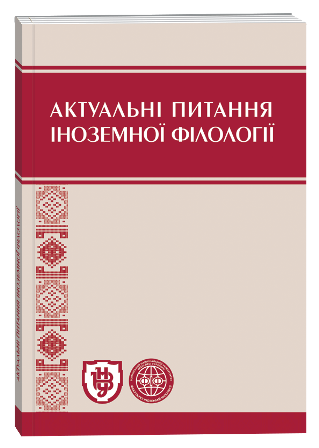INTERACTIVE METADISCOURSE MARKERS IN INFORMED CONSENT TEMPLATES FOR DENTAL TREATMENT
DOI:
https://doi.org/10.32782/2410-0927-2022-16-15Keywords:
metadiscourse, interactive markers, informed consent, transitional markers, code glosses, frame markersAbstract
Purpose of this study is to define and examine interactive metadiscourse markers that navigate the patients through the texts and help them to interpret the texts of informed consent for dental treatment in a more precise manner. Methodology. Twenty original informed consent templates for dental treatment used in the USA healthcare settings authorized to render oral and dental services were analyzed in this descriptive and exploratory study. The texts were also processed by Text inspector, a professional web tool, to analyze metadiscourse markers. The identification and categorization of the metadiscourse in the informed consents is grounded on the metadiscourse model of K. Hyland. Novelty. Informed consent is a genre in which awareness of the audience is critical in capturing rhetorical objectives and metadiscourse helps to establish relationship between writer, reader, socio-cultural context, and specific communicative situation. This study, the first attempt to investigate metadiscourse markers in English informed consent templates, has demonstrated that the interactive metadiscourse primarily focused on assistance on the reader’s text navigation and text organization based on the writer’s awareness of the audience, are somewhat superior over the interactional ones aimed at getting the readers involved in the text. Results. Interactive metadiscourse in the informed consent templates are predominantly represented by transitional markers, code glosses and frame markers in combination with visual elements. The endophoric markers and evidentials are the least used interactive metadiscourse devices. This can be explained by communication purposes and strategies of this genre to organize health-related information into a meaningful structure for the readers, and direct them to the right voluntary and educated decision making.
References
Костенко, В., Бєляєва, О., Сологор, І. (2021). Складнопідрядні речення в текстах поінформованої згоди: структурно-семантичний і комунікативно-дискурсивний аспекти. Науковий вісник Чернівецького національного університету імені Ю. Федьковича. Германська філологія. [Complex sentences in texts of informed consent for dental treatment: structural, semantic, communicative and discoursive aspects]. Germanic Philology Journal of Yuriy Fedkovych Chernivtsi National University. 2021. № 831–832. P. 135–147. [in Ukrainian]
Amiryousefi, M., Eslami, R. A. (2101). Metadiscourse: Definitions, issues and its implications for English teachers. English Language Teaching, Vol. 3, No. 4. P. 159–167. URL: http://dx.doi.org/10.5539/elt.v3n4p159
Barro, R., Lee, J.-W. (2013). Educational Attainment Dataset. URL: http://www.barrolee.com
Bax, S., Nakatsuhara, F., Waller, D. (2019). Researching L2 writers’ use of metadiscourse markers at intermediate and advanced levels. System. V. 83. P. 79–95. URL: http://hdl.handle.net/10547/623184
Beauvais, P. J. (1986). A speech act theory of metadiscourse. Written Communication. V. 6. P. 11–30. URL: https://doi.org/10.1177/0741088389006001002
Crismore, A., Markkanen, R., Steffensen, M. S. (1993). Metadiscourse in Persuasive Writing. Written Communication. V. 10. P. 39–71.
Cuevas-Alonso, M., Míguez-Álvarez, C. (2021). Metadiscursive Markers and Text Genre: a Metareview. Publications 2021. V. 9 (56). URL: https://doi.org/10.3390/publications9040056
D’Angelo, L. (2018). Disciplinary cultures in academic posters: A textual and visual metadiscourse analysis. Lingue e Linguaggi. URL: http://siba-ese.unisalento.it/index.php/linguelinguaggi/article/view/19159/17034
Darriba, P. (2018). English to Spanish translated medical forms: A descriptive genre-based corpus study. Translation and Interpreting. V. 10 (2). P. 122–141. DOI: 10.12807/ti.110202.2018.a09
Farahani, M. V. (2020). Metadiscourse in Academic Written and Spoken English: A Comparative Corpus-Based Inquiry. Research in Language. V. 18 (3). P. 319–341. DOI: 10.18778/1731-7533.18.3.05
Farrokhi, F., Ashrafi, S. (2009). Textual metadiscourse resources in research articles. J. English Lang. Teach. Learn. V. 52. P. 39–75.
Gee, J. P. (2008). Social linguistics and literacies: Ideology in discourses (3rd ed.). New York, NY : Taylor and Francis. 275 p. URL: https://citeseerx.ist.psu.edu/viewdoc/download?doi=10.1.1.476.9477&rep=rep1&type=pdf
Gholami, J., Ilghami, R. (2016). Metadiscourse Markers in Biological Research Articles and Journal Impact Factor: Non-Native Writers vs. Native Writers. Biochemistry and Molecular Biology Education. V. 44. No. 4. P. 349–360.
Gillaerts, P., Van de Velde, T. (2010). Interactional metadiscourse in researh article abstracts. Journal of English for Academic Purposes. V. 9 (1230). P. 128–139.
Grice, H. P. (1975). Logic and conversation. Syntax and Semantics 3: Speech Acts, Eds P. Cole and J. J. Morgan. New York, NY : Academic Press. P. 41–58.
Hall, D. E., Prochazka, A. V., Fink, A. S. (2012). Informed consent for clinical treatment. CMAJ: Canadian Medical Association journal. Vol. 184 (5). P. 533–540. URL: https://doi.org/10.1503/cmaj.112120
Harris, Z. (1970). Linguistic transformations for information retrieval. Papers in Structural and Transformational Linguistics. Dordrecht : D. Reidel. P. 458–471.
Herriman, J. (2022). Metadiscourse in English instruction manuals. English for Specific Purposes. V. 65. P. 120–132.
Hyland, K. (2004). Disciplinary interactions: metadiscourse in L2 postgraduate writing. Journal of Second Language Writing. 2004. Vol. 13, No. 2, P. 133–151. DOI: 10.1016/j.jslw.02.001
Hyland, K., Tse, P. (2004). Metadiscourse in academic writing: A reappraisal. Appl. Linguistics. V. 25. P. 156–177.
Hyland, K. (2005). Metadiscourse: Exploring Interaction in Writing. London : Continuum, 296 p.
Hyland, K. (2007). Applying a Gloss: Exemplifying and Reformulating in Academic Discourse. Applied Linguistics. V. 28 (2). P. 266–285. URL: http://citeseerx.ist.psu.edu/viewdoc/download?doi=10.1.1.122.7377&rep=rep1&type=pdf
Hyland, K., Jiang, F. K. (2018). In This Paper We Suggest: Changing Patterns of Disciplinary Metadiscourse. English for Specific Purposes. V. 51. P. 18–30. URL: https://doi.org/10.1016/j.esp.2018.02.001
Jomaa, N., Alia, M. (2019). Functional Analyses of Metadiscourse Markers in L2 Students’ Academic Writing. Arab World English Journal. V. 10. No. 1. P. 361–381. DOI: https://dx.doi.org/10.24093/awej/vol10no1.30
Kadam, R. A. (2017). Informed consent process: A step further towards making it meaningful. Perspectives in clinical research. Vol. 8 (3). P. 107–112. DOI: 10.4103/picr.PICR_147_16
Klein, D., Manning, C. D. (2003). Fast exact inference with a factored model for natural language parsing. Advances in neural information processing systems. Cambridge, MA : MIT Press. P. 3–10.
Kostenko, V. H., Bieliaieva, O. M., Solohor, I. M. (2021). Is the language of informed consent templates for dental treatment patient-friendly? 11th ECLSS Conferences on Language and Social Sciences. University of Gjakova “Fehmi Agani”, Gjakova, Kosovo, February 02–03, P. 77–78.
Kress, G., Van Leeuwen, T. (2006). Reading Images: The Grammar of Visual Design. London / New York : Routledge. 291 p.
Kumpf, E. P. (2000). Visual Metadiscourse: Designing the considerate text. Technical Communication Quarterly. V. 9 (4). P. 401–424.
Livingstone, K. A. (2019). Examining the Use of Metadiscourse Markers in Academic Writing. International Journal of Literature, Language and Linguistics. Vol. 5 (3). P. 244–254.
Mancini, C. (2005). Cinematic Hypertext – Investigating a new paradigm. Amsterdam; Washington, DC : IOS Press. 182 p.
Mandava, A., Pace, C., Campbell, B. The quality of informed consent: Mapping the landscape. A review of empirical data from developing and developed countries. J Med Ethics. Vol. 38. P. 356–365. URL: https://pubmed.ncbi.nlm.nih.gov/22313664/
Nugrahani, V. E., Bram, B. (2020). Meta-discourse Markers in Scientific Journal Articles. Journal of The Association for Arabic and English. V. 6 (1). P. 1–16. DOI: http://dx.doi.org/10.31332/lk w.v6i1.1528
Ordonez-Lopez, P., Edo Marza, N. (2016). Medical Discourse in Professional, Academic and Popular Settings. Bristol. Blue Ridge Summit: Multilingual Matters, 231 p.
Reid, K. I. (2017). Informed Consent in Dentistry. Journal of Law and Med Ethics. V. 45 (1). P. 77–94. DOI: 10.1177/1073110517703102
Sanford, S. G. (2012). A comparison of metadiscourse markers and writing quality in adolescent written narratives. Graduate Student Theses, Dissertations, & Professional Papers. University of Montana, 32 p. URL: https://scholarworks.umt.edu/etd/1366
Xu, J., Li, J. (2021). A syntactic complexity analysis of translational English across genres. Across Languages and Cultures. Vol. 22, P. 214–232. DOI: 10.1556/084.2021.00015







